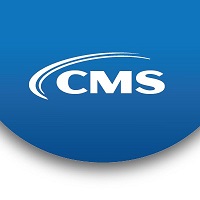 Outpatient Prospective Payment System (OPPS) & Ambulatory Surgical Center (ASC) proposed rule advances CMS’ commitment to increasing price transparency and strengthening Medicare
Outpatient Prospective Payment System (OPPS) & Ambulatory Surgical Center (ASC) proposed rule advances CMS’ commitment to increasing price transparency and strengthening Medicare
The Centers for Medicare & Medicaid Services (CMS) (@CMSGov) is proposing historic changes as a result of President Trump’s recent Executive Order on price and quality transparency that lays the foundation for a patient-driven healthcare system. The proposed rule proposes price transparency requirements that will increase competition among all hospitals by requiring them to make pricing information publicly available. As a result, patients would be able to shop for health care that meets their needs and budgets.
“President Trump has laid out a clear vision for healthcare: a patient-centered system that puts you in control and provides the affordability you need, the options and control you want, and the quality you deserve. Providing patients with clear, accessible information about the price of their care is a vital piece of delivering on that vision, and it’s what the President’s executive order on transparency called for earlier this year.” said HHS Secretary Alex Azar. “Under this proposal, hospitals will finally have to make their real, negotiated prices known to patients, enabling patients to shop among providers. Healthcare leaders across the political spectrum have been talking about the need for real transparency for years. This proposal is now the most significant step any President has ever taken to deliver transparency and put patients in control of their care.”
The proposals for calendar year (CY) 2020 includes historic changes that would require hospitals to take the following actions:
- Make public their “standard charges” (defined as two types of charges: gross charges and payer-specific negotiated charges) for all items and services provided by the hospital.
- Make public standard charges on the Internet in a machine-readable file that includes additional information such as common billing or accounting codes used by the hospital (such as Healthcare Common Procedure Coding System (HCPCS) codes) and a description of the item or service. This provides a common framework for comparing standard charges from hospital to hospital.
- Make public payer-specific negotiated charges for common shoppable services in a manner that is consumer-friendly.
- “Shoppable” services are services that can be scheduled by a health care consumer in advance. Examples of shoppable services include x-rays, outpatient visits, imaging and laboratory tests or bundled services like a cesarean delivery, including pre-and post-delivery care.
- Consumer-friendly means the hospital charge information must be made public in a prominent location online (or in written form upon request) that it is easily accessible, without barriers, and searchable. It also means the service descriptions are in ‘plain language’ and the shoppable service charges are displayed and grouped with charges for any ancillary services the hospital customarily provides with the primary shoppable service.
“All Americans have the right to know the price of their healthcare up front,” said CMS Administrator Seema Verma. “Thanks to President Trump, healthcare prices won’t be a mystery and consumers will be able to shop for healthcare just like they do for everything else they buy. This rule will finally expose hospital pricing practices, let hospitals compete on price and is a first step toward ending surprise billing practices.”
In order to ensure hospitals comply with the requirements detailed above, the rule proposes new enforcement tools including monitoring, auditing, corrective action plans, and civil monetary penalties of $300 per day. The agency is also soliciting feedback on the best way to capture information on the quality of hospital inpatient care so that information can be provided to patients in a way that is useful for them when comparing care options.
The price transparency proposals, along with the Procedure Price Lookup tool launched in 2018, which allows patients to compare Medicare prices for procedures done in hospital outpatient departments and ambulatory surgery centers, would give beneficiaries the ability to compare out-of-pocket costs across different settings of care and would allow patients to work with their clinicians to choose the setting that best meets their needs. These proposals will empower all patients with pricing information to help them make healthcare decisions that work best for them.
CMS is also proposing several policies that would give Medicare beneficiaries more choices in where they seek care that would lower their out-of-pocket costs. In last year’s final rule, the Trump Administration began a two-year phase-in to remove the significant payment disparity between Medicare payment for clinic visits in certain off-campus hospital outpatient departments versus the physician office setting, which was driving volume increases in the outpatient setting. CMS will complete the phase-in of the policy in CY 2020, which will result in lower copayments for Medicare beneficiaries.
- For example, for a clinic visit furnished in an excepted off-campus provider-based department, the average beneficiary cost sharing was $23 in 2018. The current average beneficiary cost sharing is $16 in 2019 (under the first year of the phase-in). With the completion of the two-year phase-in, the beneficiary cost sharing would be reduced to $9 for a visit, saving beneficiaries an average of $14 for each clinic visit they have at an off-campus department in CY 2020.
- In total, the policy is estimated to save $160 million for beneficiaries by lowering their copayments and save the Medicare program an estimated $650 million in 2020.
In addition, CMS also proposes to expand the number of procedures payable when furnished in either the ambulatory surgery centers or outpatient hospital departments, such as knee replacements (Total Knee Arthroplasty) and certain coronary intervention procedures. These changes would give patients more choices on where to obtain care, improving beneficiary access and convenience and lowering out-of-pocket expenses.
View a fact sheet on the CY 2020 OPPS/ASC Payment System proposed rule (CMS-1717-P).
The proposed rule can be downloaded from the Federal Register.
